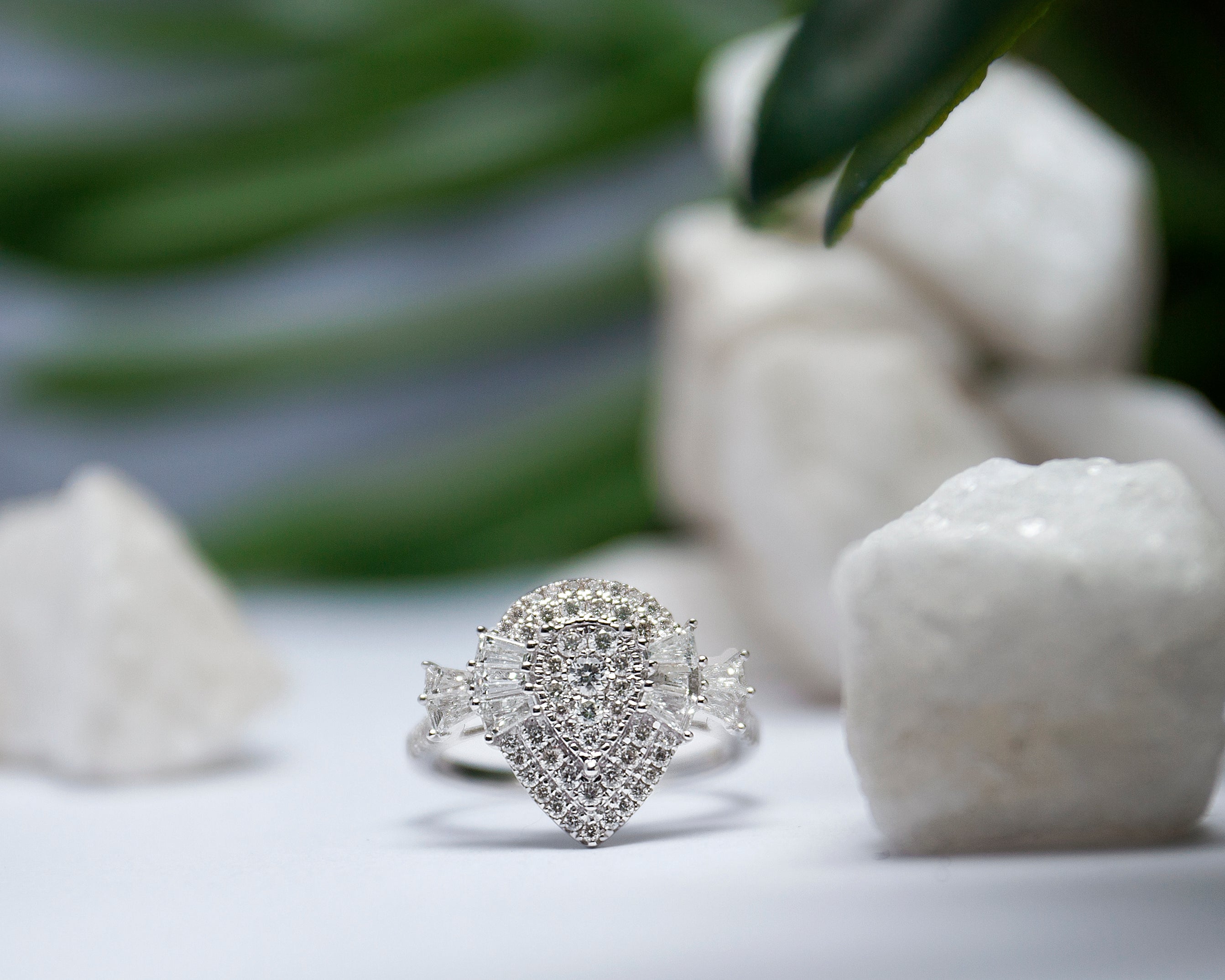The Four Cs
So now that you know why you are buying an engagement ring made with a diamond, you can familiarise yourself with the “Four Cs” – cut, colour, clarity and carat. All must be considered equally when comparing diamonds, but more than any other factor, according to Tiffany and Co, it is how the diamond is cut that will determine its defining characteristic.
Cut
As the only characteristic of a diamond not influenced by nature, the cut is open to mistakes and bad practices. Cut a diamond incorrectly and the defining sparkle will be compromised. It is how the 57 or 58 facets (the tiny planes cut on the diamond’s surface) are angled and sized that dictate how light reflects and exits the diamond, an effect known as its “fire”. Make the cuts too deep or too shallow and the diamond will be less brilliant.
The cut will also determine the shape of the diamond. The most common shape is the round cut, but others include the emerald, the pear, the marquise, the princess, the oval and the heart shape. Ask to see all of these shapes, if only in a picture, to make sure you have covered all your options.
Colour
The most valuable and rare colour is white, that is to say, colourless. Jewellers grade absolutely colourless diamonds with a “D”. The scale moves up to “Z” (don’t ask what happened to A, B and C) and, between these two extremes, diamonds will display subtle coloured tones. Diamonds with a very strong and distinct colour are extremely rare and are called fancies.
Clarity
Many people get unnecessarily hung up over the clarity of a diamond. Look into most diamonds with a jeweller’s loupe (magnifying eyeglass) and you will see small “inclusions”, also known as “nature’s fingerprints”. They look like small clouds or feathers but are usually invisible to the naked eye. Inclusions can affect the diamond’s fire, but they also make your diamond unique and shouldn’t always be seen as a fault. Why worry too much about something you can’t see, anyway? As long as the stone is graded SI1 (Slightly Included 1) or better (best and most expensive is IF, or Internally Flawless; worst is I3, or Imperfect 3), you should be all right.
Carat
The weight, and thus the size, of a diamond is measured by carat. A carat is equal to 0.2gm, or 200mgm. A carat is divided into 100 smaller units called points. For example, three-quarters of a carat is 75 points. The average size of most engagement-ring diamonds is somewhere between one carat and half a carat. Do not confuse carats with karats, the unit of purity for gold.
Any reputable jeweller will know about the four Cs and be prepared to talk you through them all without prompt when displaying diamonds. But if you don’t wish to place your trust entirely in a jeweller, you should request a “cert stone” – a diamond that has been assessed, graded and coded with a laser by an independent gemmological laboratory. The type of certificate is important, as not all are universally recognised. The most internationally recognised are issued by GIA (the Gemmological Institute of America). Other popular certificates include HRD, IGL, EGL and AGS (see Diamond Certificate Issuers, right). The fee for a grading certificate varies depending upon the carat of your diamond, but for exact prices, contact a specific laboratory. And do not be afraid of organising your own certificate rather than accepting the jeweller’s recommendation.
Another good reason for getting cert stones is to guard against buying “diamonds” made with substitutes. Zircon, white sapphire, topaz and quartz are natural minerals that can be nearly colourless and used as natural diamond substitutes. Synthetic substitutes include cubic zirconia and moissanite. All these are sold as legitimately cheap alternatives, but be aware that they are sometimes, albeit rarely, passed off as real diamonds.
Diamonds can also be artificially treated, most commonly by being fracture filled, irradiated or laser treated. All of this is legal, as long as it is disclosed to the buyer, but if you want a “real” and untreated diamond, guard yourself against terms such as “clarity enhanced”.







